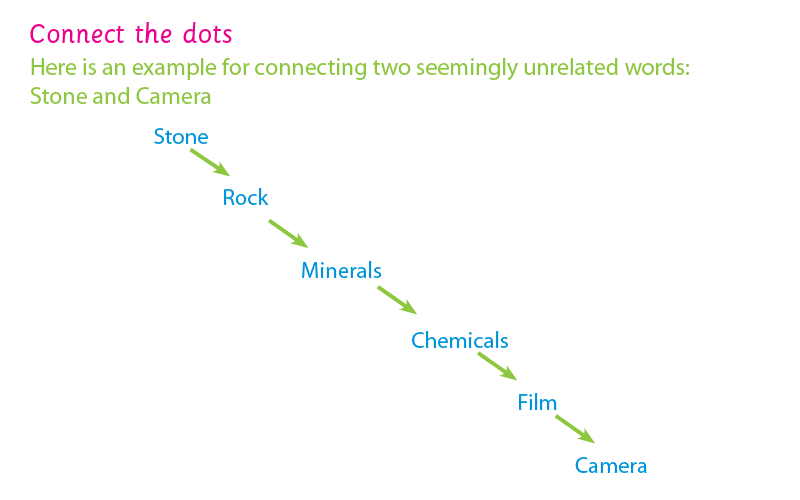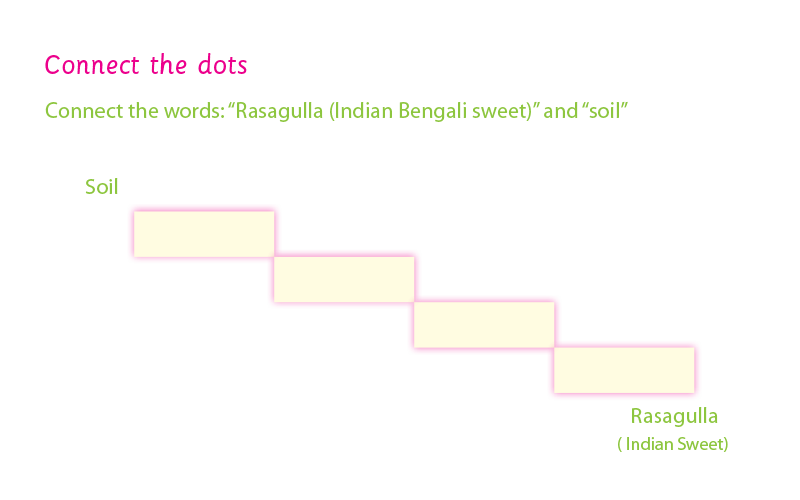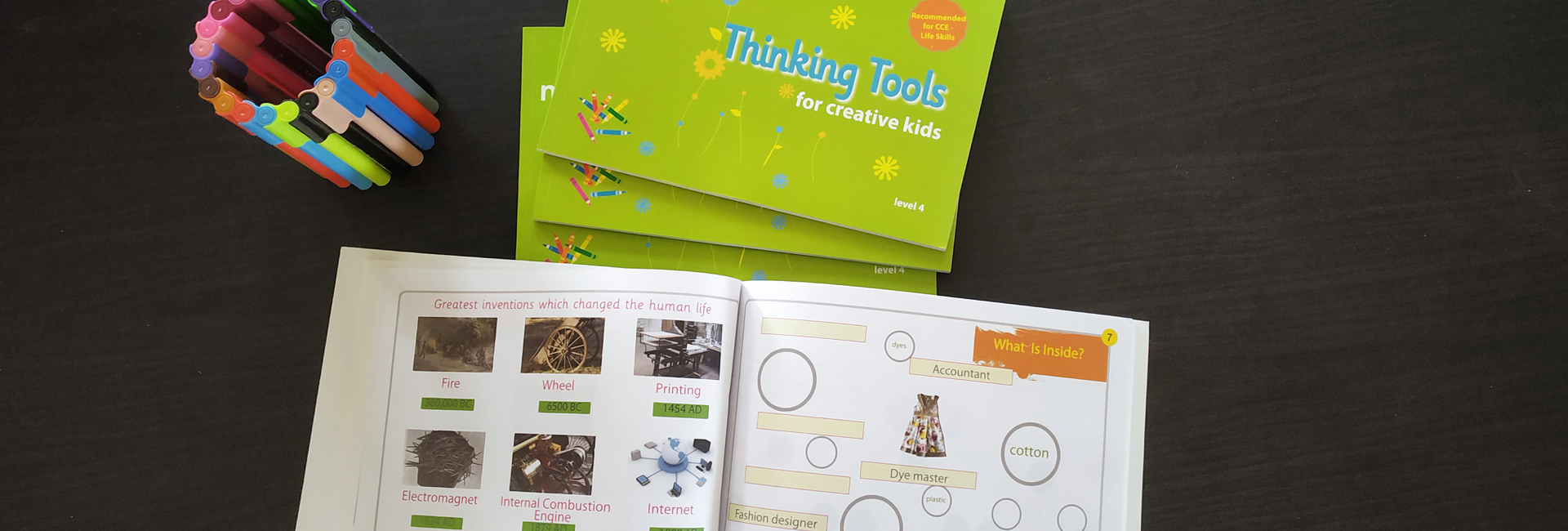07 Jan Free Kids Activities for Creative Thinking – Part 4
“Creative Thinking” or creatively solving a problem is the most sought skill. It is going to be the top skill to look for a world moving towards automation of standardized jobs. How to develop a mindset that the habit of solving a problem comes to children with ease and swift? We research on this problem and have developed methods to impart creative thinking. In 2012, we published a well-designed activity book “Thinking Tools for Creative Kids“. Thinking Tools inspired thousands of students in well-known schools in India. It aids in developing a problem-solving mindset. In this blog series, we’ll share some of the exercises from the book.
Thinking Tools #4: Connect The Dots: Connecting the two seemingly unrelated concepts
Why this technique?
What is the connection between stone and camera? Finding a relation between two seemingly unrelated concepts is a prerequisite of any creative problem-solving techniques. This technique is part of creative thinking activities, where children are trained to find an association between the unrelated concepts. It’s the simplest way to introduce the art of connecting things, which is essential for any creative mind.
How to do?

What is the connection between stone and camera? In this thinking exercise, the child has to find a relation for connecting two seemingly unrelated concepts. At first, it looks like both are different things, but if you look deeper, you can find a connection. For example, the stone is from rocks and a lot of minerals present in rocks. The minerals are a part of a significant component of the camera. Do look for relations rather than sound logic, while connecting.

Get the activities for the above tools by downloading free-thinking tools exercises here.
Tips for parents
1. If your child is struggling or about to give up, give tips like, what might be an association between the concepts at the material level or usage level.
2. Do not force your answers on them; maybe you can solve the problem separately.
3. The objective of the exercise is creative thinking, so it takes time. Do not worry about finishing at a shorter duration.
4. There is no ideal answer to these exercises. As longs as, it makes senses to children and able to explain it, it is okay.
Stories from field
Our children are trained to believe that there is only one right answer for most of the problems. That may be true for arithmetic problems like finding the square root of twenty-five. But most of the life problems are open-ended, and there is no one ideal answer. We can creatively solve the problems in numerous ways. We had a tough time convincing a seven-year-old girl that there may be a relationship between sugar and soil. She was refusing to the activity saying it is impossible to find a connection between the two. Later we understood, she was rewarded for perfect answers and punished for not “correct” answers. So the mind stopped thinking creatively, and she becomes risk-averse in thinking. This thinking is the starting point for the development of a fixed mindset personality. In a fixed mindset personality, children were thinking that they are not capable of solving problems, and a perfect solution will come from external authority.
This post is the third in a series of exercises taken from “Thinking Tools” level 4 book. Buy the book for more activities on developing a problem-solving mindset for children. Read part five here.
Author

Manikandan S T
Designing the Learning Experience
Mentor at Miyav Kids



